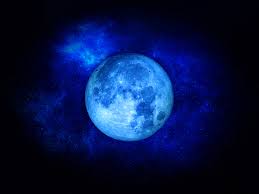Solar wind from a large coronal hole on the sun is expected to strike Earth this weekend, potentially triggering auroras
 A significant solar wind stream is expected to impact Earth this weekend, caused by a large coronal hole in the sun’s atmosphere, according to reports. This event may produce vibrant auroral displays, especially in higher latitude regions. Additionally, a smaller coronal hole near the primary one is also contributing to the solar wind directed towards Earth. The geomagnetic activity resulting from this has led to a minor G1-class geomagnetic storm warning for January 4 and 5.
A significant solar wind stream is expected to impact Earth this weekend, caused by a large coronal hole in the sun’s atmosphere, according to reports. This event may produce vibrant auroral displays, especially in higher latitude regions. Additionally, a smaller coronal hole near the primary one is also contributing to the solar wind directed towards Earth. The geomagnetic activity resulting from this has led to a minor G1-class geomagnetic storm warning for January 4 and 5.
Auroral Displays and Geomagnetic Storms
The National Oceanic and Atmospheric Administration’s (NOAA) Space Weather Prediction Center shared the space weather forecast on X (formerly Twitter). Geomagnetic storms are classified on a G-scale, with G1 being minor and G5 extreme.
While G1 storms are relatively common, they can still produce vivid auroras. Recent solar activity over the New Year period has already led to impressive auroral displays, even reaching mid-latitude areas.
Coronal holes are cooler, darker regions in the sun’s corona, which allow solar wind to escape at higher speeds. When this wind reaches Earth’s magnetosphere, it can trigger geomagnetic storms, potentially creating dazzling auroras.
Impact of Solar Wind on Auroral Activity
Experts suggest that aurora enthusiasts at higher latitudes could be in for spectacular views if conditions are right. Space weather predictions are often variable, and outcomes can vary. To track these events, tools like the “My Aurora Forecast & Alerts” app or NOAA’s three-day space weather forecast can provide real-time updates.
Though not every geomagnetic storm results in visible auroras, the possibility of stunning northern lights this weekend has generated excitement among sky watchers. People in regions with clear, dark skies should stay alert for the chance to witness this natural phenomenon.








